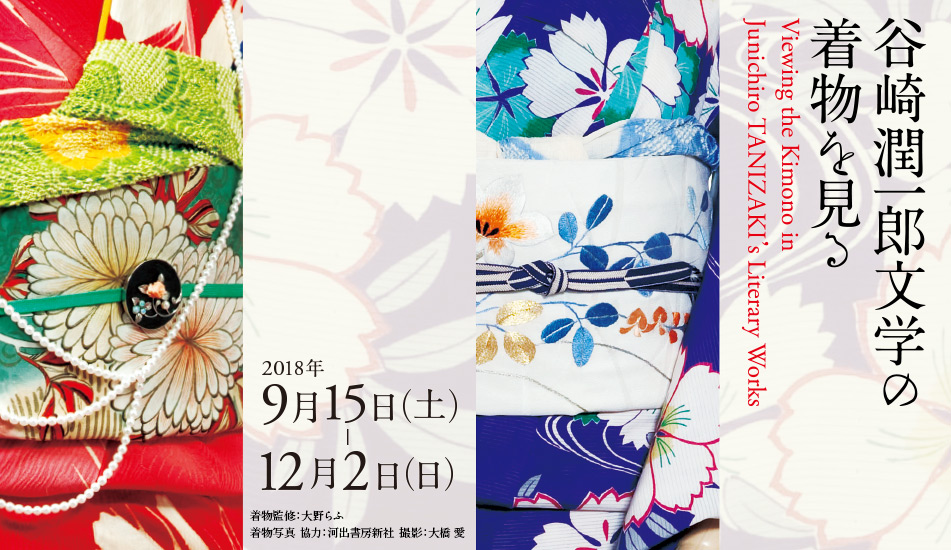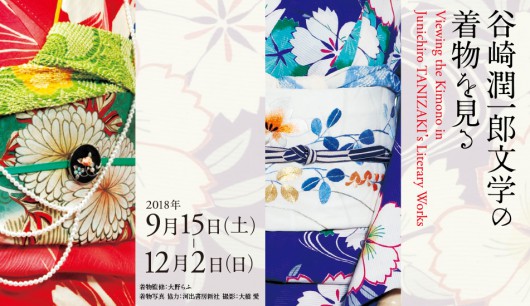Event
Viewing the Kimono in Junichiro TANIZAKI’s Literary Works
Sep 15,2018 – Dec 2,2018
10:00 a.m. to 5:00 p.m.
*last admission: 4:30 p.m.
Hours: 10:00 ~ 17:00(entry up to 30 minutes before closing.)
Closed: Mondays, Dec 25- Jan 3
Admission: Adults:900yen(800)
Students (high school and university): 500yen(400)
Junior high school students and under: free
* Prices shown in ( ) indicate group (more than 20 persons) discount tickets.
* Persons with disabilities: 300yen
https://www.asahibeer-oyamazaki.com/english/tokubetu/40667/
Venue
ASAHI BEER OYAMAZAKI VILLA MUSEUM OF ART
http://www.asahibeer-oyamazaki.com/english/
Access: 5-3 Zenihara, Oyamazaki-cho, Otokuni-gun, Kyoto, 618-0071 Japan
Tel: 075-957-3123
Hours: 10:00 ~ 17:00(entry up to 30 minutes before closing.)
Closed: Mondays.
(except Sep 17, Sep 24, Oct 8, Nov 19, Nov 26)
Sep 18 , Sep 25 and Oct 9
Description
The Japanese literary giant Junichiro Tanizaki (1886–1965) depicted women and their fashion in rich detail. A half century after his death, it is now difficult for modern Japanese people, who are becoming less and less familiar with kimonos, to recreate in their heads the descriptions of women’s fashion in his works. What kind of kimonos did he want to feature in his works? One of the main attractions of his masterpiece Sasameyuki (The Makioka Sisters) is the female characters in their gorgeous kimonos. This exhibition examines the ways the characters in his novels dress, based on a wide variety of materials and sources. In addition, this exhibition recreates the fashions of attractive heroines in his various works, such as Chijin-no-Ai (Naomi), Shunkin-sho (A Portrait of Shunkin), and Daidokoro-taiheiki (The Maids), using antique kimonos and with reference to his descriptions, illustrations for his books, and documents containing information about the manners and customs of the times.
Tanizaki was acquainted with Shotaro Kaga (1888–1954), a successful businessman who built the Oyamazaki Villa, the main building of the Asahi Beer Oyamazaki Villa Museum of Art. The Villa was constructed during the Taisho period (1912–1926) through the early Showa period (1926–1989), which is when Tanizaki lived and set many of his stories. We hope that visitors will enjoy the world of Tanizaki’s literature at our Museum of Art, which strongly retains the atmosphere of the time.






